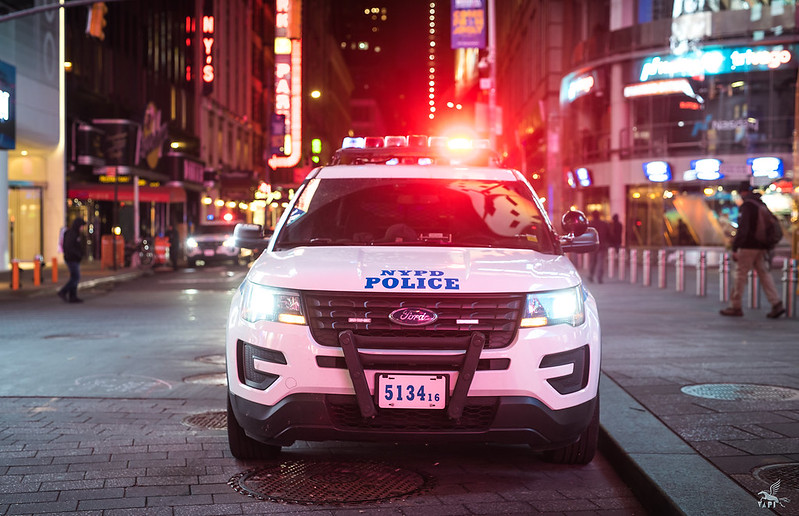On July 21, the Biden administration released its “Safer America Plan,” part of its budget for the 2023 fiscal year. It requests $2 billion in discretionary spending, plus $35 billion in investment over 10 years to address crime and violence. Back in March, Filter reported on Biden’s 2023 budget release, which included similar figures but few details. Now, the administration has provided more explanation of how the money would be spent. The 2023 fiscal year begins October 1, and the budget must be approved by Congress.
Biden’s plan would help hire an additional 100,000 new cops for “accountable community policing,” paying out about $13 billion in five years through the Community Oriented Policing Service (COPS) Hiring Program. It would set aside additional funds for small police departments. It also allocates about $3 billion to help clear court backlogs and solve murders, and increase law-enforcement intelligence sharing among local communities.
“In this moment of fear and concern, the president must not repeat yesterday’s mistakes today.”
Biden’s plan has been criticized by many advocacy groups, including the NAACP Legal Defense Fund and the ACLU.
“In this moment of fear and concern, the president must not repeat yesterday’s mistakes today,” said Yasmin Cader, ACLU deputy legal director, in a statement. “He calls for hiring 100,000 additional state and local police officers—the same increase in officers as the 1994 crime bill.”
“This failed strategy did not make America safer,” she continued. “Instead it resulted in massive over-policing and rampant rights violations in our communities. Moreover, Biden’s plan does not articulate a specific proposal to ensure that both existing and new officers are accountable to the public and consistently respect individuals’ constitutional rights.”
As Cader referenced, the COPS program dates back to 1994, to the omnibus crime bill championed by then-Senator Biden and signed into law by President Bill Clinton. Clinton also promised then to hire 100,000 new officers nationwide—he ended up hitting about 88,000.
COPS gives federal grants to local law enforcement, to hire officers and train them in “community policing.” In nearly 30 years since its introduction, critics have noted that COPS has become a lucrative pot of money for police departments to tap into with little oversight. It has fueled aggressive and paramilitary tactics, boosted the drug war and expanded police budgets in small, relatively safe cities and towns. And years later, even the federal Government Accountability Office found that COPS had a very minor impact on crime during Clinton’s tenure, which saw rapid growth in mass incarceration.
Biden’s plan would also increase penalties for fentanyl trafficking—a regressive proposal that will be condemned by advocates for entrenching the drug war and increasing incarceration and racial disparities. On the other hand, it would finally eliminate the federal crack-powder cocaine sentencing disparity, and make this retroactive. The disparity has long been condemned as racist; it dates back to the 1980s, when then-Senator Biden once again helped to pass it, that time under President Ronald Reagan. Since then, legislation signed by Presidents Obama and Trump has chipped away at it, without removing it entirely.
Since his presidential campaign, however, Biden has consistently supported repealing it. Last year, a large bipartisan majority in the House voted to do so; promisingly, the bill has since gained significant support among Senators—including even Senator Joe Manchin (D-WV) and 11 Republicans.
It also creates a $15 billion grant program for cities and states that advance strategies to prevent violent crime and use non-police responses to certain emergencies.
Despite Biden’s intention to hire 100,000 cops, several provisions in the plan point in other directions. The plan aims, for example, to increase spending on services that can help address root causes of crime—including mental health and substance use treatment, “crisis responders” and social workers, education and housing.
It also allocates $5 billion for “evidence-based community violence intervention programs.” And it creates a $15 billion grant program, called “Accelerating Justice System Reform,” to award money to cities and states that advance strategies to prevent violent crime and use non-police responses to certain emergencies.
That element of the plan could boost a nationwide movement; dozens of cities have taken some recent steps to separate police from certain emergencies involving mental health, substance use or homelessness. Denver, for example, created the “STAR” program last year. In its first six months, it successfully directed nearly 750 emergency calls to a two-person clinical team with a van—none involved police or ended with an arrest. But the problem for many such programs is that their staffing and funding is tiny compared to cities’ enormous police departments.
Biden is also proposing to greatly mitigate federal discrimination against formerly incarcerated people. His plan would lift “nearly all restrictions” on federal benefits and other programs for people returning from prison or jail. It additionally proposes a range of gun control measures.
Altogether, the plan takes two different, and contradictory, approaches: hiring more cops, but also investing in distressed communities. It roughly splits the dollars between the two. It’s now in the hands of Congress. House Democrats have already started approving spending bills that make up Biden’s 2023 budget request, while the closely divided Senate is lagging behind. It’s uncertain if any agreement will be reached before lawmakers begin a month-long recess on August 8.
As the haggling continues, we’re left to imagine how things would be if the equation of lavish funding for law enforcement were dramatically reversed. What if the country spent most of its money and energy on schools, housing, health care and other vital services? What if police, for once, got the short end of the stick? The Safer America Plan, despite some positive provisions, won’t show us the answer.
Photograph of NYPD car by vapi photographie via Flickr/Creative Commons 2.0





Show Comments